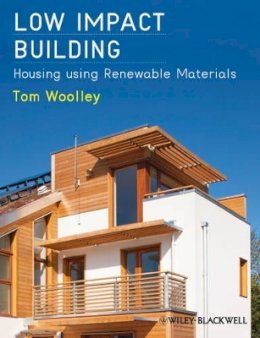
Stock image for illustration purposes only - book cover, edition or condition may vary.
Low Impact Building: Housing using Renewable Materials
Tom Woolley
€ 107.41
FREE Delivery in Ireland
Description for Low Impact Building: Housing using Renewable Materials
Paperback. This guide to the designs, technologies and materials that really make green buildings work will help architects, specifiers and clients make informed choices, based on reliable technical information. Num Pages: 252 pages, Illustrations. BIC Classification: AMCR. Category: (P) Professional & Vocational. Dimension: 246 x 180 x 12. Weight in Grams: 566.
Read more
This guide to the designs, technologies and materials that really make green buildings work will help architects, specifiers and clients make informed choices, based on reliable technical information.
Low Impact Building: Housing using Renewable Materials is about changing the way we build houses to reduce their ‘carbon’ footprint and to minimise environmental damage. One of the ways...
Product Details
Format
Paperback
Publication date
2013
Publisher
John Wiley and Sons Ltd United Kingdom
Number of pages
252
Condition
New
Number of Pages
256
Place of Publication
Hoboken, United Kingdom
ISBN
9781444336603
SKU
V9781444336603
Shipping Time
Usually ships in 15 to 20 working days
Ref
99-15
About Tom Woolley
Tom Woolley is an architect and educator and self-builder. He has taught at the Architectural Association, Strathclyde University, Hull School of Architecture, Queens University Belfast, University of Central Lancashire, UiTM in Malaysia, University of Umea, the Centre for Alternative Technology in Wales, University of Bath and University of Gloucestershire. His research work and writing has covered housing policy, sustainable materials...
Read moreReviews for Low Impact Building: Housing using Renewable Materials
“I would recommend it to both experienced practitioners and those new to the subject. It provides enough detail to allow one to source products, ask the right questions, challenge the answers, and hopefully promote the use of natural materials.” (The Society for the Protection of Ancient Buildings, 1 October 2013)
